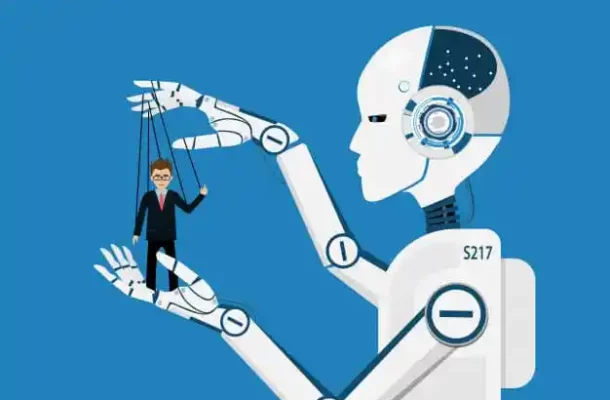Explore the transformative impact of artificial intelligence in the workplace and the evolving attitudes towards it. Uncover the delicate balance between dependence and resistance, with experts advocating education as the key to unlocking AI's potential. Learn how employees can adapt, learn, and harness technology to their advantage in an ever-changing professional landscape.
Introduction: In the relentless march of technological progress, artificial intelligence (AI) has swiftly woven itself into the fabric of our professional lives. Just over a year since the unveiling of OpenAI's ChatGPT, the influence of AI on the workforce is undeniable, reshaping daily routines and altering the nature of work itself. As AI emerges as both a boon and a perceived threat, experts are championing a strategic solution: education. In this exploration, we delve into the dichotomy of AI in the workplace and the imperative for embracing knowledge as a means of empowerment.
1. AI's Reshaping Influence: A Pervasive Presence in Daily Work
Artificial intelligence has transcended its nascent stage, becoming an indispensable tool that generates innovative ideas and streamlines workflows across diverse professions. From administrative tasks to abstract idea generation, AI is embedded in the daily routines of workers, altering the very landscape of how tasks are executed.
2. The Tug of War: AI as a Career Threat
Despite its undeniable utility, AI has not been universally embraced. Many workers perceive it as a looming threat to their professional trajectories. Foreign media echoes the sentiment that employees are already dependent on AI, raising concerns about stifled creativity, especially among the newer generations entering the workforce.
3. The Silent Response: Employers Curtailing AI in the Workplace
In response to the growing influence of AI, some employers are taking a defensive stance. Organizations, wary of potential misuse or data leakage, are discreetly suppressing or outright banning access to AI tools like ChatGPT. Simon Johnson, head of the global economics and management group at MIT Sloan School of Management, highlights this trend, underlining the need for cautious approaches.
4. The Dilemma of Prohibition: Balancing Dependence and Control
While some companies are imposing strict prohibitions on the use of AI during working hours, a paradox emerges. Employees, who have grown reliant on technological tools, find themselves grappling with restrictions that challenge their accustomed workflows. The delicate balancing act between dependence and control becomes a central theme in the evolving narrative of AI in the workplace.
5. Unlocking Potential: The Role of Education in AI Integration
Experts advocate a paradigm shift in approaching AI—from perceiving it as a threat to embracing it as a valuable tool. The key lies in education and training. Employees are encouraged to proactively learn about AI, understand its applications in their specific roles, and acquire new skills that align with technological advancements.
6. Embracing Change: The Tactic of Adaptation and Learning
Rather than evading the inevitable influx of AI, the best strategy is adaptation, continuous learning, and leveraging technology to one's advantage. Likens, a proponent of this mindset, emphasizes that education is pivotal for employees to navigate the complexities of AI and unlock its benefits, fostering a symbiotic relationship between human ingenuity and technological innovation.
In conclusion, the evolving relationship between AI and the workforce underscores the need for a proactive and informed approach. As employees grapple with the dual nature of AI—both a tool and a potential threat—education emerges as the beacon guiding individuals towards a future where technological integration enhances rather than hinders professional growth.


Comments